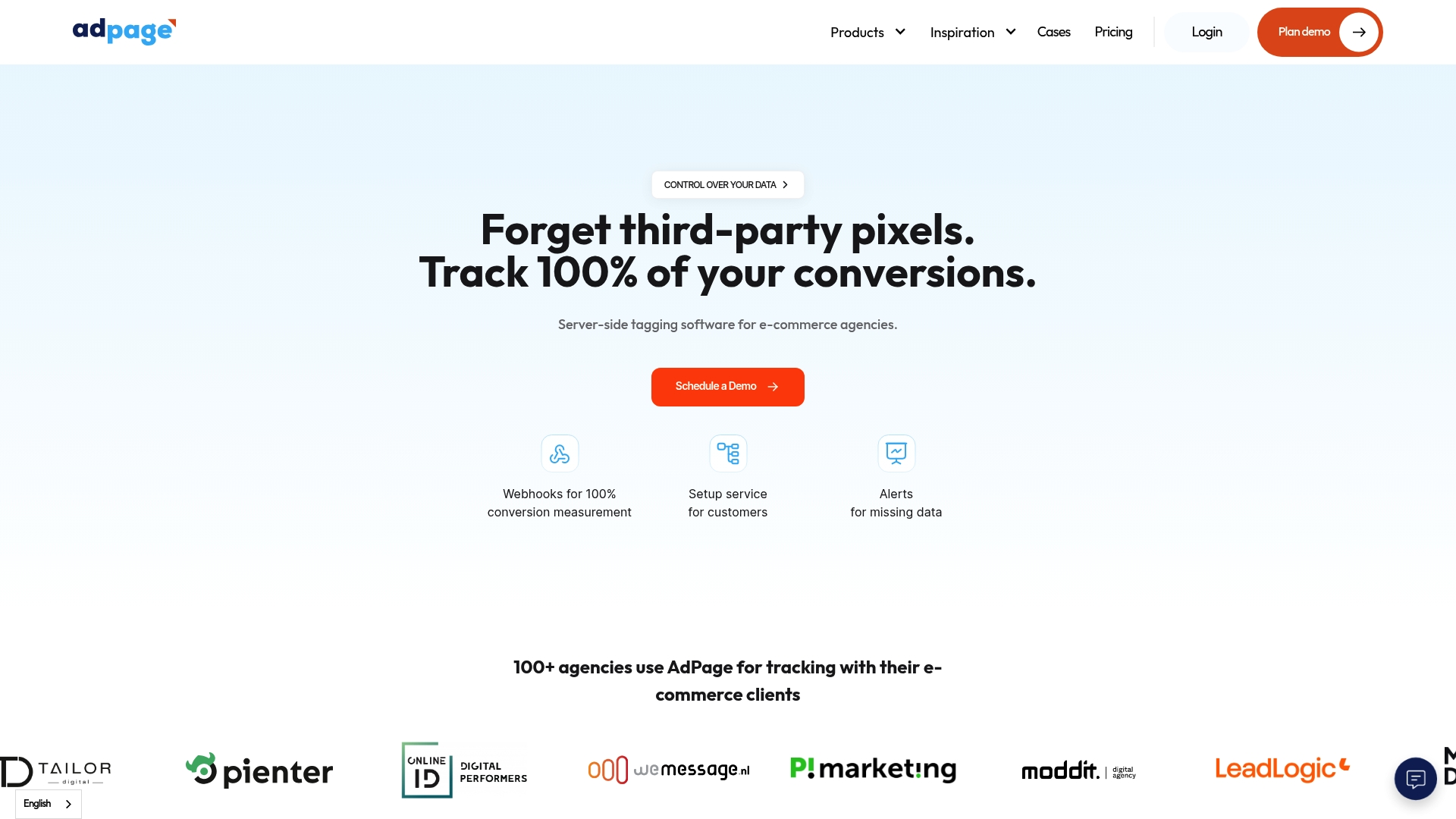Tracking pixels might sound tiny and technical, yet they hold enormous influence in digital marketing. Some might be surprised that these nearly invisible 1x1 pixel images power a 20 percent boost in marketing ROI for organisations using advanced tracking, according to McKinsey Digital. But while many think of them as just sneaky web code, the truth is tracking pixels are the silent engines transforming user clicks into razor-sharp, real-time business decisions.
Table of Contents
- What Are Tracking Pixels And Their Functionality?
- The Importance Of Tracking Pixels In Digital Marketing
- How Tracking Pixels Work: Mechanisms And Data Collection
- Key Concepts Behind Tracking Pixels And Their Applications
- Real-World Examples Of Tracking Pixels In Use
Quick Summary
| Takeaway | Explanation |
|---|---|
| Tracking pixels collect user data invisibly | These tiny images gather information without disturbing the user experience, essential for understanding interactions. |
| Marketers can measure precise campaign performance | Tracking pixels provide critical metrics like conversion rates and user engagement for better marketing strategies. |
| Personalisation boosts engagement and conversion | Data from pixels allows for targeted advertising, improving relevance and user response to campaigns. |
| Real-time data enhances marketing strategies | Immediate insights from tracking pixels enable businesses to adjust and optimise campaigns promptly. |
| Tracking pixels support comprehensive user profiles | By collecting timely data, they enable marketers to build detailed profiles for more effective targeting and engagement. |
What are Tracking Pixels and Their Functionality?
Tracking pixels represent tiny, transparent digital images embedded within web pages, emails, and digital advertisements, functioning as sophisticated data collection tools that enable businesses to gather critical insights about user behaviour and interactions. Learn more about pixel tracking methods.
How Tracking Pixels Operate
At their core, tracking pixels are minute 1x1 pixel graphic files that remain invisible to website visitors. When a webpage loads or an email gets opened, these pixels trigger an automatic HTTP request to a server, transmitting specific information about the user’s digital interaction. This request generates valuable data points including:
- IP address
- Browser type
- Device specifications
- Time of interaction
- Geographic location
Technical Mechanics of Pixel Tracking
Traditionally, tracking pixels function through JavaScript or HTML code that loads an imperceptible image. When this image requests loading from a server, it simultaneously sends backend analytics about the specific user session. Research from Digital Marketing Institute confirms that these microscopic digital tools capture granular data points without disrupting user experience, making them incredibly powerful for understanding online interactions.
The sophisticated mechanism allows marketers and businesses to construct comprehensive user profiles, track conversion rates, and optimise digital marketing strategies with unprecedented precision. By capturing real-time interaction data, tracking pixels transform abstract online movements into actionable strategic insights.
The Importance of Tracking Pixels in Digital Marketing
Tracking pixels have transformed digital marketing by providing unprecedented insights into user behaviour, enabling businesses to craft highly targeted and personalised marketing strategies. Explore advanced tracking strategies for digital campaigns.
Performance Measurement and Analytics
Digital marketers rely on tracking pixels as critical tools for measuring campaign performance with extraordinary precision.
![]() These microscopic data collectors enable businesses to understand complex user journeys, tracking specific interactions from initial ad exposure through to final conversion. Research from McKinsey Digital demonstrates that organisations using advanced tracking mechanisms can improve marketing return on investment by up to 20%.
These microscopic data collectors enable businesses to understand complex user journeys, tracking specific interactions from initial ad exposure through to final conversion. Research from McKinsey Digital demonstrates that organisations using advanced tracking mechanisms can improve marketing return on investment by up to 20%.
Key performance metrics captured through tracking pixels include:
- Conversion rates
- User engagement duration
- Click-through rates
- Audience demographic insights
- Customer acquisition costs
Personalisation and Targeted Advertising
Tracking pixels enable hyper-personalised marketing experiences by collecting granular data about individual user preferences, browsing patterns, and historical interactions. This sophisticated approach allows marketers to develop highly targeted advertising campaigns that speak directly to specific audience segments, significantly improving engagement and conversion potential.
By transforming raw digital interactions into actionable intelligence, tracking pixels empower businesses to move beyond traditional broad-spectrum marketing approaches, creating more efficient, responsive, and customer-centric promotional strategies.
How Tracking Pixels Work: Mechanisms and Data Collection
Tracking pixels operate through sophisticated digital mechanisms that silently collect user interaction data across online platforms. Discover advanced web tracking techniques.
Technical Request Generation
The pixel tracking process begins when a user interacts with digital content, triggering an invisible HTTP request to a designated server. Consumer Privacy Protection Agency explains that this request generates comprehensive data about the user’s digital interaction, capturing critical information without interrupting the browsing experience.
Key data points automatically collected include:
- User’s IP address
- Timestamp of interaction
- Specific webpage accessed
- Browser type and version
- Operating system details
Data Transmission and Processing
Once the tracking pixel sends its request, the receiving server processes the gathered information, transforming raw digital interactions into structured analytics. This mechanism allows businesses to build detailed user profiles, track conversion pathways, and understand complex online behaviour patterns.
The pixel’s microscopic size and transparent nature ensure users remain unaware of the data collection process, enabling businesses to gather insights without disrupting user experience. By converting abstract digital movements into actionable intelligence, tracking pixels provide unprecedented visibility into online consumer interactions, empowering marketers to develop more targeted and effective digital strategies.
Below is a table summarising key types of data collected by tracking pixels and their role in digital marketing analytics, helping clarify how each data point is utilised by marketers.
| Data Type | Example/Detail | Marketing Use |
|---|---|---|
| IP address | User’s internet protocol address | Determines geographic location and user identity patterns |
| Browser type and version | e.g., Chrome v.114 | Ensures compatibility, analyses preferred browsing platforms |
| Device specifications | Desktop, tablet, mobile | Tailors user experience for device types |
| Timestamp of interaction | Time and date of website/email access | Tracks peak interaction periods, supports campaign timing |
| Geographic location | Country, region, city | Enables region-specific targeting and offers |
| Specific web page accessed | URL of visited content | Analyses user interests and navigation patterns |
| Operating system details | Windows, macOS, Android, iOS | Optimises campaigns for dominant platforms |
Key Concepts Behind Tracking Pixels and Their Applications
Tracking pixels encompass complex technological mechanisms that extend far beyond simple data collection, representing sophisticated tools for understanding digital user interactions. Learn more about cross-platform tracking strategies.
Core Technological Foundations
Research from Gartner Digital Markets reveals that tracking pixels operate through intricate coding architectures that enable seamless information transmission across multiple digital platforms. These miniature digital components function as intelligent data conduits, transforming raw online interactions into structured, actionable intelligence.
Fundamental technological principles underlying tracking pixels include:
- Lightweight HTTP request mechanisms
- Transparent image embedding techniques
- Server-side data processing protocols
- Cross-platform compatibility frameworks
- Real-time analytics generation
Strategic Digital Marketing Applications
Beyond technical functionality, tracking pixels serve as critical strategic instruments for businesses seeking comprehensive insights into digital consumer behaviour. They enable organisations to develop nuanced marketing strategies by providing granular understanding of user engagement, preferences, and conversion pathways.
By bridging technological sophistication with strategic intelligence, tracking pixels empower businesses to move beyond traditional marketing approaches, creating more personalised, responsive, and data-driven promotional ecosystems that adapt dynamically to evolving digital consumer landscapes.
Real-World Examples of Tracking Pixels in Use
Tracking pixels demonstrate remarkable versatility across numerous digital platforms, transforming how businesses understand and engage with online audiences. Explore data tracking challenges and solutions.
E-commerce and Retail Applications
Harvard Business Review Digital indicates that e-commerce platforms leverage tracking pixels to create highly personalised shopping experiences. Online retailers use these microscopic data collectors to monitor customer browsing patterns, abandoned cart interactions, and purchase histories, enabling sophisticated retargeting strategies that dramatically improve conversion rates.
Key tracking pixel applications in retail include:
- Abandoned cart recovery campaigns
- Personalized product recommendations
- Customer segmentation
- Dynamic pricing strategies
- Conversion rate optimization
Marketing and Advertising Deployment
Digital marketers employ tracking pixels as precision instruments for understanding audience engagement across multiple channels. These tools enable advertisers to track user interactions from initial ad exposure through complete conversion, providing granular insights into campaign performance and audience behaviour.

By capturing intricate details of digital interactions, tracking pixels transform abstract online movements into concrete strategic intelligence, allowing businesses to create more targeted, responsive, and effective marketing approaches that adapt in real-time to evolving consumer preferences.
The following table compares two major categories of tracking pixel applications discussed in the article, highlighting their purposes and key functionalities in real-world digital marketing.
| Application Area | Primary Purpose | Key Functionalities |
|---|---|---|
| E-commerce and Retail | Personalise shopping experience, optimise sales | Abandoned cart recovery, product recommendations, conversion optimisation |
| Marketing and Advertising | Improve campaign performance, audience targeting | Engagement tracking, conversion pathway analysis, responsive ad adaptation |
Transform Tracking Pixel Insights into Action with AdPage
Are you struggling with lost conversions due to browser restrictions or privacy regulations, even though you use tracking pixels to gather vital user data? The article has highlighted how traditional client-side pixels can miss out on important interactions, leading to incomplete analytics and missed optimisation opportunities. If these gaps are holding back your marketing performance and you want accurate, reliable, and GDPR-compliant data, then it is time to look at a modern solution.

AdPage helps marketing agencies and e-commerce businesses reclaim 100% conversion visibility with powerful server-side tagging technology and consent management tools. Our platform connects easily with Shopify, WooCommerce and Magento so you can protect every valuable data point and boost your campaign results. Discover how you can secure every conversion and stop data loss today by visiting AdPage solutions. Take full control of your tracking systems now—because perfect data means more sales and greater growth.
Frequently Asked Questions
What is a tracking pixel and how does it work?
A tracking pixel is a tiny, invisible image embedded in web pages or emails that collects data about user interactions. When a page loads or an email is opened, the pixel sends an HTTP request to a server, capturing information such as the user’s IP address, browser type, and the time of interaction.
How can businesses benefit from using tracking pixels?
Businesses use tracking pixels to gain insights into user behaviour and interactions, enabling them to optimise marketing strategies, measure campaign performance, and create personalised experiences for their customers based on data analytics.
What kind of data do tracking pixels collect?
Tracking pixels collect various data points, including the user’s IP address, browser type, device specifications, geographic location, and interaction timestamps, allowing businesses to build comprehensive user profiles and track conversions effectively.
Are tracking pixels a privacy concern?
Tracking pixels can raise privacy concerns as they collect user data without direct user awareness. However, many businesses take steps to comply with privacy regulations and ensure users are informed about data collection practices through privacy policies.



.png)
